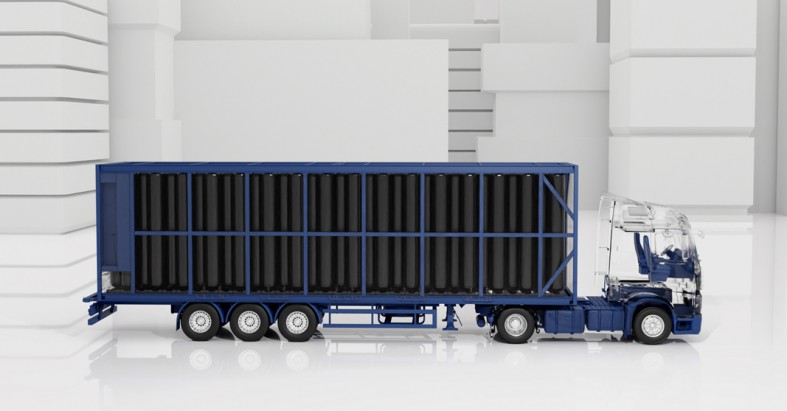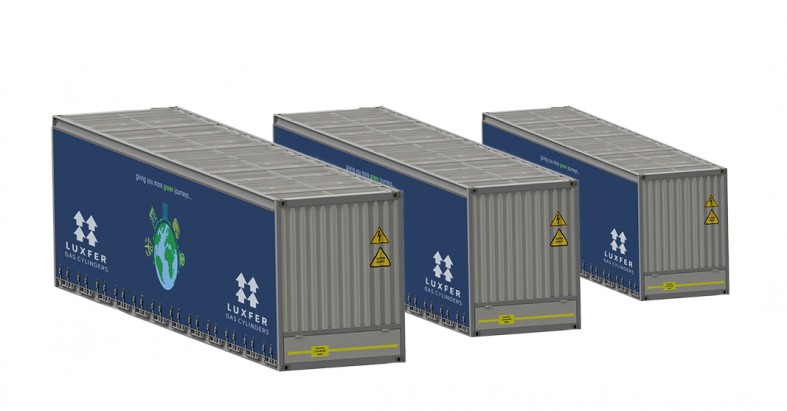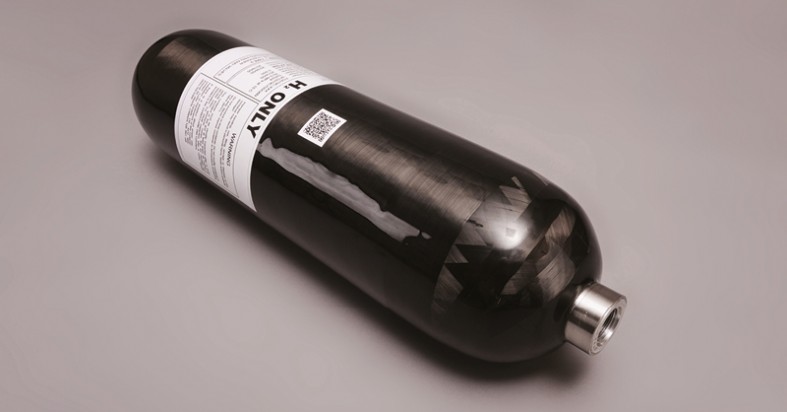US +1800 764 0366 | Europe & Middle East +44 (0)115 980 3800 | Asia-Pacific: +61 2 7227 5369

Written by Kevin Gilbert, Design Engineer at Luxfer Gas Cylinders Europe
As world leaders gathered at COP27 in a renewed push around hydrogen as an alternative fuel, one of the much-debated issues remained – infrastructure. It is acknowledged as critical to widespread adoption, particularly amid the commitment made by 2023 for 5% of the global deep-sea fleet to run on clean fuel, with six green shipping corridors operational by 2050.
Where no gas networks exist, bulk gas transport systems offer a route to take hydrogen from the point of production to the point of use as a ‘virtual pipeline’, and Luxfer is pioneering in this space, in a bid to make hydrogen more accessible. In fact, among Luxfer’s latest projects are 20-foot, 40-foot and 45-foot Multiple Element Gas Containers (MEGC), which can store between 0.5 and 1.4 tonnes of hydrogen, based upon the cylinder technology employed and the end-use destination.

A model to move hydrogen to suit business need
Across the market, companies are interrogating ways to move hydrogen that would best suit their operation. Two options available are:
– To own assets and move large amounts of hydrogen using a high capacity system, or
– To invest in a supplier who can handle deliveries, transporting smaller quantities of the clean gas across countries, to where it’s needed.
While early demand was for the larger units, due to barriers to access the gas in great quantities, Luxfer was increasingly called upon to help firms who needed to transport smaller volumes of gas.
However, as carbon reduction targets become a central focus for companies, the distribution of smaller quantities could present issues. After all, a 40-foot container is a greener option than a number of trucks clogging up the road network. Ensuring a sustainable operation will need to be on the radar for OEMs – and Luxfer has the knowledge and track record to help in this decision-making.
It’s not clear at this point what route will be taken. Are physical pipelines advantageous, or will virtual pipeline alternatives be better received? With input from companies with a stake in the hydrogen economy, this will be directed by the market and government.
Consultations continue to take place, and at Luxfer we have added our voice to the discussion, as members of the UK HFCA and Hydrogen Europe. In fact, Luxfer’s bulk gas transport experts have submitted their insights to a recent UK Government paper on Hydrogen Transport and Storage Infrastructure, and we will continue to share our position on how hydrogen can pave the way to achieving Net Zero.
Over 30 years of gas storage expertise
While hydrogen is a new and burgeoning area, Luxfer’s industry-leading composite gas storage solutions have been established over 30 years. From lightweight cylinders for self-contained breathing apparatus worn by firefighters, to H2 storage systems for a range of transport projects. These include:
– A collaboration with Netherlands and Belgium-based sustainable vehicle manufacturer E-Trucks Europe to deliver a fleet of zero-emission refuse truck.
– The UK’s first mass-produced hydrogen-electric truck, in a landmark partnership with Tevva Hydrogen Electric Trucks.
Luxfer’s MEGC solutions are recently developed, with the objective to help companies distribute hydrogen across the UK and Europe. The ambition is to create a mass of hydrogen through electrolysers. With local governments providing the funds necessary, Luxfer can support the hydrogen economy – ultimately delivering on our mission to safeguard a clean and energy-efficient environment for all.
Bulk gas transport – the road ahead
While early developments in harnessing hydrogen’s potential pivoted around on-road, there is a significant requirement for Net Zero to utilise clean fuel on our waterways. However, we’re still some way off seeing the first hydrogen cruise liner.
At Luxfer, we have worked on several hydrogen marine applications, such as the world’s first hydrogen-powered Crew Transfer Vessel. Thanks to this track record, we can support companies that want to develop bulk gas transportation for waterways and help them navigate challenges, such as the lack of specific legislation.
High-pressure gas containment demands the utmost standards of safety and quality, which Luxfer can deliver due to its unrivalled technical and engineering expertise.
Looking ahead, other areas of focus for Luxfer include equipping the construction to use hydrogen. It involves use of the clean fuel to operate groundwork vehicles, boosting the sustainability of building projects. Luxfer has the know-how for this, drawing upon projects for hydrogen tractors, heavy-duty port vehicles and other off-road vehicles. Indeed, in some cases this work is designing solutions to fit with Luxfer systems customers already have in place.
This helps to build confidence that Luxfer has the crucial insights and has evolved its expertise in gas storage and its know-how in cylinder technology, to the rapidly expanding alternative fuel landscape.

A high quality cylinder for hydrogen
At Luxfer Gas Cylinders we have applied our trusted, proprietary technology to the bulk gas transport market with our G-Stor™ Pro H2 Type 3 cylinder.
Featuring a Luxfer-manufactured aluminium liner, fully wrapped with aerospace-grade carbon fibre, it is heavier than a Type 4 cylinder. And while this could seem less efficient than using a Type 4 cylinder with a polymer liner, the high thermal conductivity of our aluminium liner removes heat from the gas generated as it is filled.
Heat produced in a fast-fill system could damage a Type 4 polymer-lined cylinder. It would be necessary to chill the gas or slow down the filling time to avoid this – and a speedy turnaround is preferable for most customers.
With a Type 3 cylinder, none of the hydrogen is wasted, plus they are more robust, fill faster and won’t leak, which means a choosing a Type 3 increases the asset value of the entire system.
Luxfer’s objective is to continue to innovate, offering customers solutions pinned upon what they need, and what’s most important to their operation. Key considerations for any bulk gas transport project will include the right filling speeds and maximum gas capacity. As a technology-neutral company, Luxfer is working hard to ensure it can support any virtual pipeline requirement.